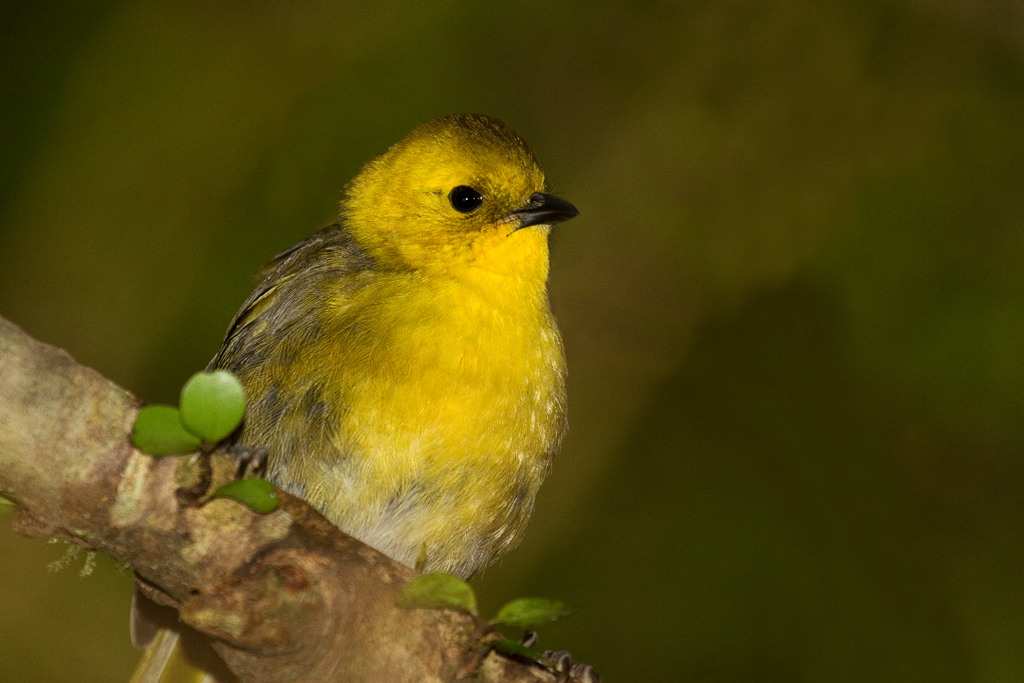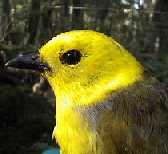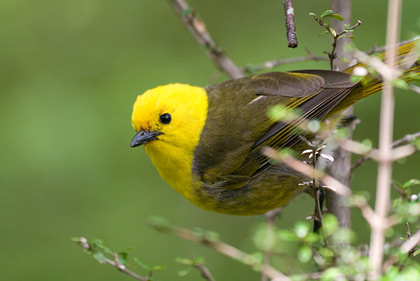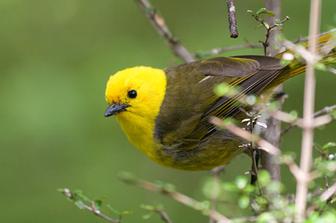
Mohua ochrocephala
SUBFAMILY
Mohuinae
TAXONOMY
Mohua ochrocephala Gmelin, 1798, Queen Charlotte Sound,
New Zealand.
OTHER COMMON NAMES
English: Mohua, bush canary; French: Mohoua а tкte jaune;
German: Weisskцpfchen; Spanish: Cabeza Amarilla.
PHYSICAL CHARACTERISTICS
6 in (15 cm); c. 0.7 oz (20 g). Brownish olive upperparts with
bright yellow head and yellow breast.
DISTRIBUTION
South Island of New Zealand, including Marlborough, Nelson,
Westland, western Otago, Southland and near Dunedin.
HABITAT
Forest, especially dominated by beech (Nothofagus).
BEHAVIOR
Pairs and trios occupy large home ranges in breeding season.
Several families form larger flocks in nonbreeding season,
which are joined by other bird species. Varied, mechanical call
of six to eight notes rapidly repeated.
FEEDING ECOLOGY AND DIET
Spend most of the day foraging, in shaded canopy or upper
subcanopy. Glean from foliage, branches and trunks and sometimes
rip into dead wood. Mostly insectivorous, especially taking
larvae, but occasionally eat fruit, flowers and fungi.
REPRODUCTIVE BIOLOGY
Facultatively cooperative or possibly polygamous. Breeds October
to February. Cup-shaped nests placed in holes. Three to
four pinkish eggs, blotched with reddish brown. Incubated by
female for 18–21 days, young fledge at 21 days and are fed by
two or three adults up to 55 more days.
CONSERVATION STATUS
Declared Vulnerable, due to extensive decline as a result of
forest loss. Also avoids edges, stunted and regrowth forests.
Less vulnerable to nest predators than many New Zealand
birds, due to hole nesting, but recently fledged young may be
at risk.
SIGNIFICANCE TO HUMANS
None known.
Photo Gallery of - Yellowhead




 Animalia Life
Animalia Life